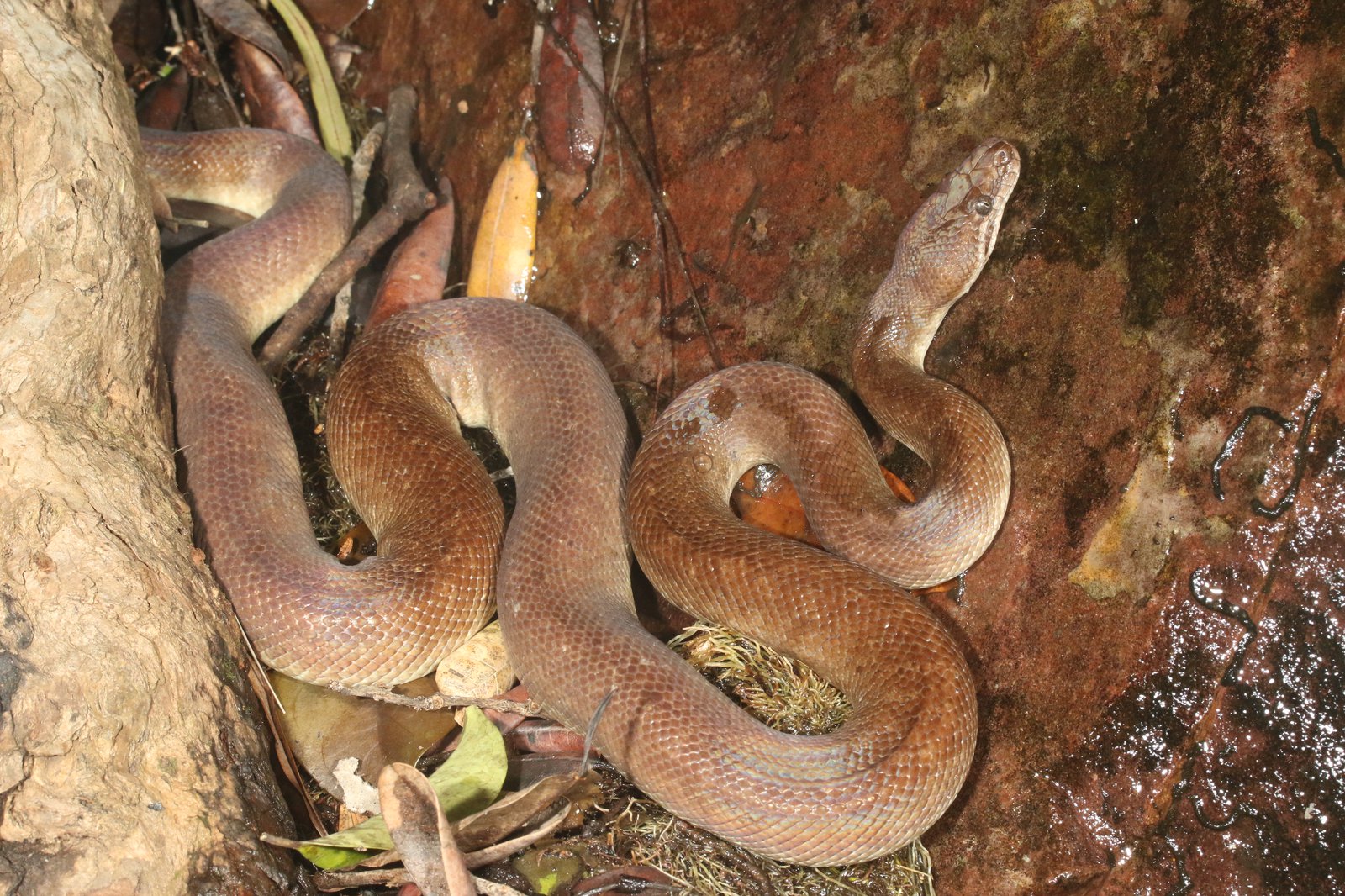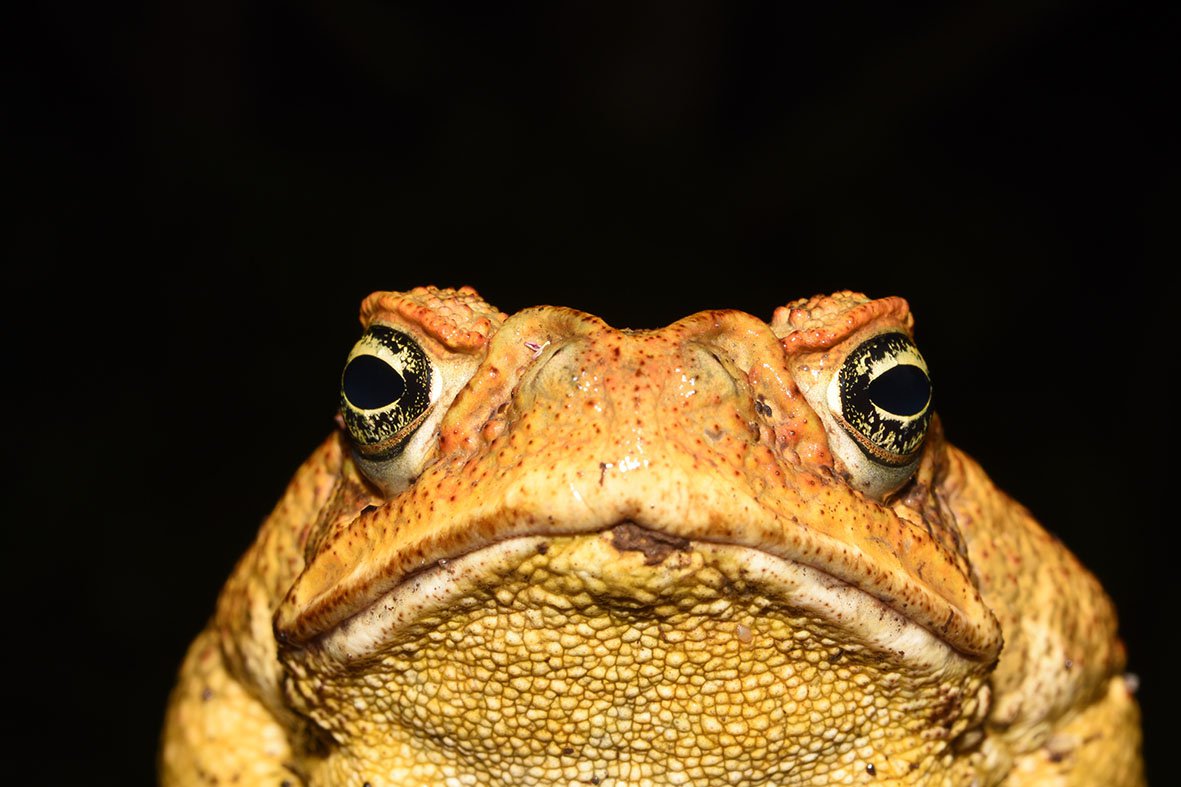A further impact of Cane Toads in northern Australia?

The toxic Cane Toad (Rhinella marina), introduced to Australia in the 1930s as a biocontrol agent. It has now been implicated in the decline of many native mammals and reptiles.
Image: Dane Trembath© Dane Trembath
Across northern Australia, native mammals, particularly mid-sized mammals (in the 'critical weight range', CWR; 35-5500g), have undergone dramatic population reductions over the past two decades. Some of the main known drivers for the loss of these mid-size mammals are feral cats and changed fire regimes. However, there may be another factor that has contributed in a more indirect way- the introduced Cane Toad (Rhinella marina). By examining snake and lizard data from northern Australia, we discovered that the arrival of the Cane Toad in Darwin, Katherine and Kununurra coincided with declines in large, predatory reptiles and a subsequent increase in medium sized reptiles - the kind that like to eat these mid-size mammals.
It’s well-known that the introduction of the toxic Cane Toad to Australia has caused declines in predators such as large mammal and reptile species that eat (and often die eating) toads. Indeed, larger reptilian predators such as goannas, freshwater crocodiles, Blue Tongued Lizards and some snakes have experienced dramatic population declines coinciding with the arrival of the Cane Toad. But what are the impacts of these large reptile declines on other animals, and might there be follow-on effects for mid-size mammal populations?

The Children’s Python (Antaresia childreni), a common small python often caught by licenced reptile catchers. This species feeds on frogs, reptiles and mammals.
Image: Dane Trembath© Dane Trembath
In order to examine this possibility, we used reptile removal records from licenced reptile catchers in Darwin, Katherine and Kununurra, as well as mid-size mammal survey data from Kununurra. Not surprisingly, we found that there was a decline in large reptiles that ate frogs and small reptiles shortly after the arrival of the Cane Toad. At the same time, and perhaps as a result, smaller reptile species increased. It’s this increase in smaller reptile species, which often prey upon mammals, that just may have contributed to mid-size mammal population declines.
While there's no doubt that feral cats and a changing climate are serious ongoing threats to mid-size mammal species in northern Australia, this, rather indirect, trophic cascade caused by the arrival of the Cane Toad may have also played a part. Further research is needed to test this hypothesis. While not at first an obvious impact, the arrival of an invasive species may have many indirect and complex effects.
Dane Trembath
Technical Officer, Herpetology, Australian Museum Research Institute; Research Associate, Museum & Art Gallery of the Northern Territory

Cane Toad (Rhinella marina).
Image: Jodi Rowley© Jodi Rowley
More information
- Radford, IJ, Wooley, LA, Dickman, CR, Corey, B, Trembath, DF and Fairman, R (2020) Invasive anuran driven trophic cascade: An alternative hypothesis for recent critical weight range mammal collapses across northern Australia. Biological Invasions. https://doi.org/10.1007/s10530-020-02226-4
Acknowledgements
We would like to thank the Ian Radford from Western Australia Department of Biodiversity, Conservation and Attractions for leading this research. In addition, we thank the Northern Territory Department of Land Resource Management, and Rick Shine from the University of Sydney for use of their research data to help develop this study

